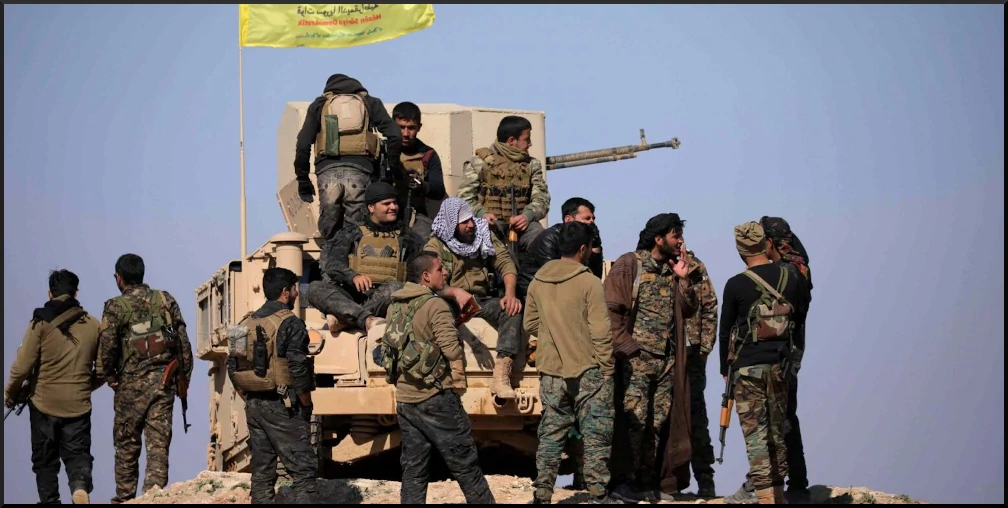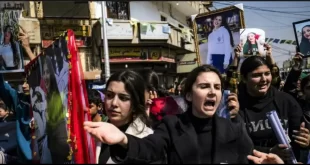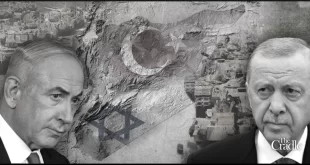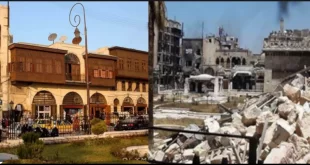by Steven Sahiounie, published on Mideast Discourse, April 27, 2023
Another hair brained scheme from the Zelenski-Biden course. I have long argued that U.S. Turkish occupation of Syria is enough to consider Syria an additional front to the U.S. proxy war on Russia, with the front face in Ukraine. Adding fuel to the fire is overkill. [jb]
The war in Ukraine was planned to extend to Syria. Leaked secret documents revealed the Ukrainian military were planning to attack Russian troops stationed in Syria in an effort to distract Russia and cause losses and casualties far from the battlefield in eastern Europe.
Jack Teixeira, a young member of the Massachusetts Air National Guard, was arrested by the FBI in the investigation of leaked classified military intelligence which were viewed on the Discord chat platform.
Among the documents were details of the planning and assessment of attacks on Russian military capabilities in Syria, to be carried out by the US military partner there, the SDF.
The SDF control the northeast quarter of Syria and the troops are made up of about one-third Kurds and two-thirds Arab tribal members. The Kurdish semi-autonomous region in Syria was created by the US alliance with the Communist administration of the Kurds under Ilham Ahmed and General Mazloum Abdi.
The area the US-Kurdish alliance controls is not populated by a majority of Kurds, but the Kurds do represent a sizable ethnic population. Once they became financially and militarily supported by the US, the Kurds were able to carry out a program of ethnic cleansing which displaced the original inhabitants from their homes, lands and businesses.
The SDF working alongside the US occupation forces in Syria were planned to be supplied with drones and other equipment to attack the Russian troops in Syria. The Russian airbase on the coast in Latakia was cited to be attacked as well as other areas.
The Ukrainian military intelligence had planned the attacks in Syria, using the US allied paramilitary force the SDF, for the purpose of opening a second front in the war with Russia. The planning strategized that Russia would be distracted by attacks on its forces in Syria, and become weaker in their military capabilities.
Ukrainian President Zelenskyy, a former TV comedienne, cancelled the operations while still in the planning stages.
The Russian military was invited into Syria in October 2015, when the terrorist group Jibhat al-Nusra was at its height and threatened to over-run the coastal region. After the Russian military arrived in Syria, the Russian forces alongside the Syrian Arab Army were successful in pushing the terrorists back. Today, the central government in Damascus controls almost all of Syria with the exception of the Kurdish region previously described, and the small province of Idlib in the north west which is under the occupation of Hayat Tahrir al-Sham, the current name of Jibhat al-Nusra. Mohammed al-Julani is in control of Idlib. He started off in Iraq with Al Qaeda, then was sent to Syria by the leader of ISIS, and finally is holding about 3 million civilian hostage in Idlib, while being supplied with humanitarian aid by the US, UN, EU and other charities.
The Russian presence in Syria today can be termed a peace-keeping mission. They still attack ISIS and terrorist positions, but most of their presence is in holding the peace between the Kurds and their sworn enemy, Turkey. If it was not for the Russian military presence in Syria, Turkey would have invaded even further into the Kurdish region, and there could have been massacres.
Russia has a working relationship with Syria, Iran and Turkey and has been negotiating for a peaceful settlement to the Syrian crisis.
Turkey had been an US ally, but has felt betrayed by the US support of the Kurdish paramilitary SDF, which consists of the core military group YPG, which is aligned with the PKK, a terrorist group responsible for about 30,000 deaths over decades.
Had the Ukrainian plan to attack Russians in Syria been carried out, the response could have been a joint Turkish-Russian military operation against the Kurds, which could have resulted in US military deaths or injuries, and would likely have ended with the US occupation forces withdrawal to Iraq.
If Zelensky hadn’t stopped the plans, Syria could have regained the north east quarter from the Kurds, and Turkey could have vanquished the SDF and YPG. That would then leave Idlib and the terrorists sitting on the border without their US supporters. It could have resulted in Idlib’s terrorist occupiers fleeing under cover of darkness, and the 3 million hostages being set free after more than a decade of captivity.
Under the plan, the SDF asked for protection that they would not be revealed as the source of the planned attacks on the Russian military in Syria, and instead make it appear that the US protected terrorists holding Idlib would be blamed.
Turkey has military troops occupying Idlib, and should the plan have been carried out, Russia could have attacked Idlib as the source of the planned attacks, and this would have been a direct confrontation between Turkey and Russia on Syria soil.
The US may have ordered Zelenskyy to halt the planned attacks on Russians in Syria. Washington, DC. is insisting to remain occupying bases in Syria to prevent Syria from access to its energy resources, and thus preventing Syria from recovery from the US-NATO attack on Syria beginning in 2011. The US has failed in their plan to install an American puppet in Syria, but they were successful in making sure they have a compliant and easily manipulated leader in Ukraine.
Steven Sahiounie is a two-time recipient of the Serena Shim Award for Uncompromised Integrity in Journalism.
 Syria Support Movement solidarity with the Syrian people
Syria Support Movement solidarity with the Syrian people





